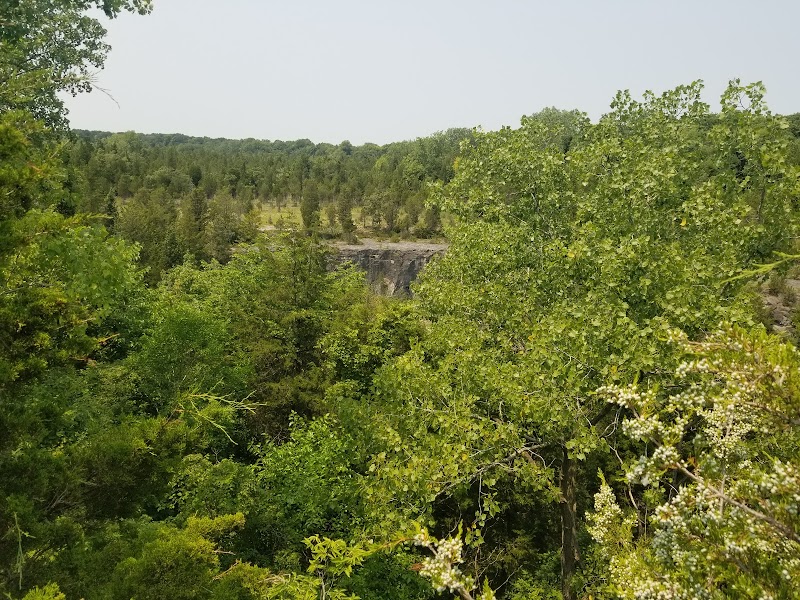
Tackling the Clinton River: Sterling Heights’ Essential Clean-Up Days
Join the spirited yet hands-on adventure of Clinton River Clean-Up Days in Sterling Heights, Michigan. This community-driven event offers a practical chance to engage with a dynamic river ecosystem while contributing to its restoration—perfect for volunteers seeking meaningful outdoor activity and connection.
Wear sturdy, waterproof footwear
The riverbank terrain is variable with muddy patches and slipping stones. Boots that handle wet and unstable ground will keep you steady throughout the clean-up.
Bring reusable gloves
Thick gloves protect you from sharp debris and overgrown vegetation. Reusable options are more durable for this hands-on event and better for the environment.
Hydrate before and during
Even in cooler weather, physical labor near water demands consistent hydration. Carry a water bottle and drink regularly to maintain energy and focus.
Dress in layers
Morning air might be brisk while afternoon sun warms the day. Layered clothing helps adjust to changing conditions without interrupting your clean-up efforts.
Tackling the Clinton River: Sterling Heights’ Essential Clean-Up Days
Every spring and fall, the banks of the Clinton River in Sterling Heights, Michigan, invite volunteers to become stewards of a waterway fiercely alive and stubbornly resilient. This annual Clinton River Clean-Up Day is more than a casual gathering—it’s a purposeful adventure where locals and visitors rally to restore the river’s flow and vibrancy. Stretching roughly 60 miles through suburban and forested areas, the Clinton River demands respect—a watercourse that twists and pushes past the edges of concrete spillways and green corridors alike. While not a traditional hike, the clean-up invites you to engage physically with the river’s edge, navigating mixed terrain of muddy banks, tall grasses, and woodland patches, covering a practical stretch of 2-5 miles per event depending on cleanup zones.
The landscape during clean-up peaks with the rippling current audibly daring you forward, while the riverbank’s trees sway subtly, shedding last season’s detritus like reluctant memories. Volunteers often find themselves waist-deep in roots and rubbish, hands gripping gloves and trash bags instead of hiking poles. Yet the reward is immediate: clearer waters, revived habitats, and the chance to witness the subtle bloom of wildflowers and chorus of birds returning to cleaner nesting grounds.
Sterling Heights’ weather shapes the clean-up experience—early spring mornings bring cool air and damp earth, while fall days offer crisp breeze and golden light filtering through shifting leaves. Both times, waterproof boots and sturdy gloves become mission-critical gear, matched by ample hydration and layered apparel to adjust to fluctuating temperatures. The work is tactile and deliberate, with each piece of trash removed resetting the river’s pulse.
Planning your day means readiness for unpredictable stretches: some spots are wide and flat, perfect for beginner hands, while others challenge you with slippery logs and patches where the river channels crowd in tight. The river’s surrounding wetlands, wild in their persistence, demand attention and respect—they're no place for hurried feet. Keep an eye on the weather; sudden rains can turn the banks into slick obstacles, while sun beats down powerfully in open sections.
More than cleanup, this event is a gateway to local knowledge. Sterling Heights’ volunteers share stories of the river’s role in community history, water quality struggles, and conservation milestones. The clean-up challenges you to be a part of that ongoing story, to push back against neglect and renew a cherished natural asset. Come prepared, stay alert, and expect the day to leave you both physically tired and deeply connected to a landscape that’s fierce, fluid, and alive.
Nearby Trips
All Adventures
Boat Charters
Water Activities
Adventures near Sterling Heights, Michigan
Discover the unique and memorable adventures that make Sterling Heights, Michigan special.
Frequently Asked Questions
Is prior experience necessary to participate?
No, volunteers of all experience levels can join. Instructions and safety protocols are provided on-site, with more seasoned crew helping newcomers navigate the riverbanks.
What kinds of debris are typically collected?
Common items include plastic bottles, fishing lines, cans, tires, and construction remnants. Removal directly improves water quality and habitat health.
Are children allowed to participate?
Yes, though children should be supervised due to uneven terrain and potential hazards. Family-friendly zones or activities may be designated for younger helpers.
How do organizers ensure safety near water?
Volunteers receive safety briefings, wear appropriate gear, and often work in teams, especially around deeper or swift sections. Life jackets are available in higher-risk areas.
What is the environmental impact of the clean-up?
Removing trash reduces pollution, prevents harm to wildlife, and promotes natural regeneration of the river ecosystem—making these days crucial to the area’s ecological stability.
Can I make multiple clean-up visits throughout the year?
Absolutely. Seasonal clean-ups happen multiple times annually, and repeat volunteers are welcomed to build community connection and deepen river stewardship.
Recommended Gear
Waterproof boots
Protect feet from wet, muddy riverbanks and provide traction on slippery surfaces.
Durable work gloves
Guard hands against sharp objects, thorny plants, and contaminated waste.
Layered clothing
Adjust insulation to variable temperatures from chilly mornings to sunlit afternoons.
Reusable water bottle
Maintain hydration throughout the physical clean-up activities.
Local Insights
Hidden Gems
- "The small inlet near 15 Mile Road offers a quiet spot filled with native wildflowers and noted for early migratory birdwatching."
- "Tucked under the footbridge by Metropolitan Parkway is a secluded stretch where river otters have been occasionally spotted."
Wildlife
- "River otters"
- "Great blue herons"
- "Kingfishers"
- "Beavers"
- "Seasonal frogs and turtles"
History
"The Clinton River once powered local mills in the 19th century and later became a critical water resources focus as urban expansion challenged its health. Clean-up days carry forward decades of community efforts to revive the river’s role beyond industry."
